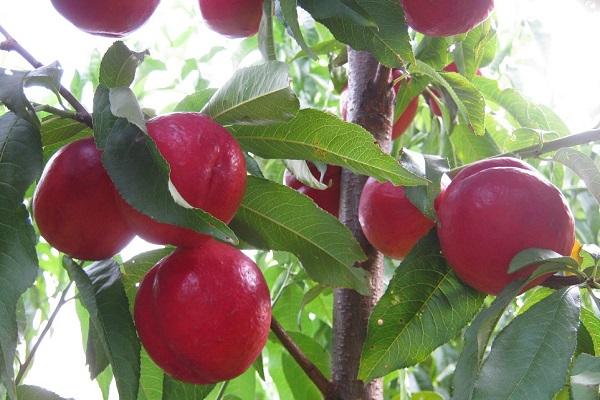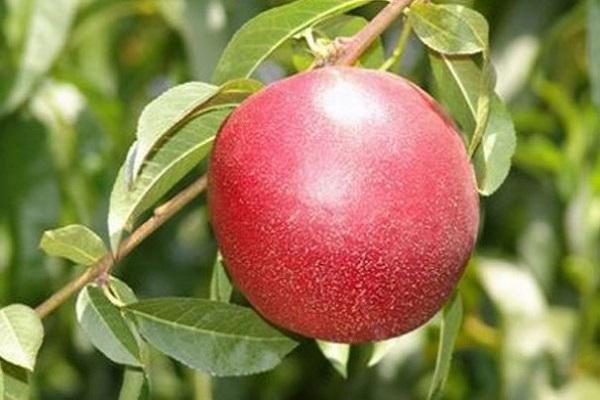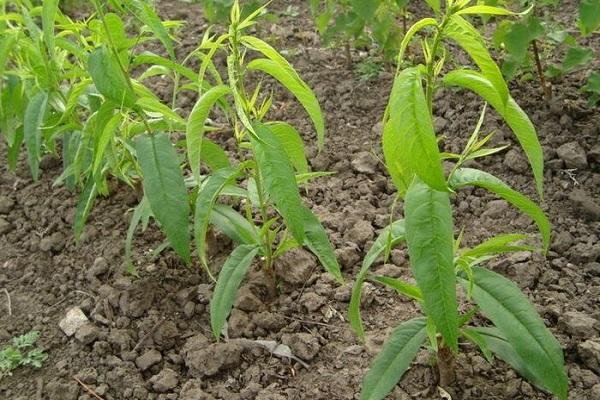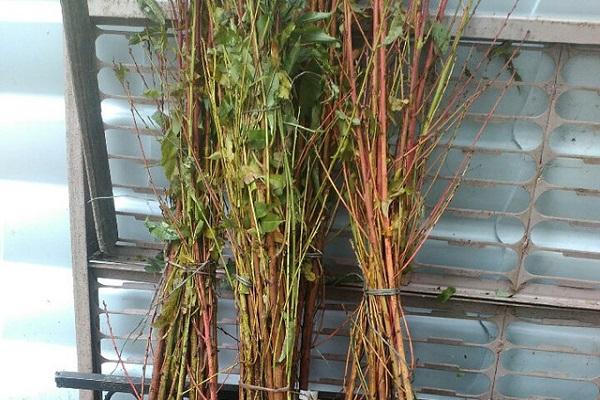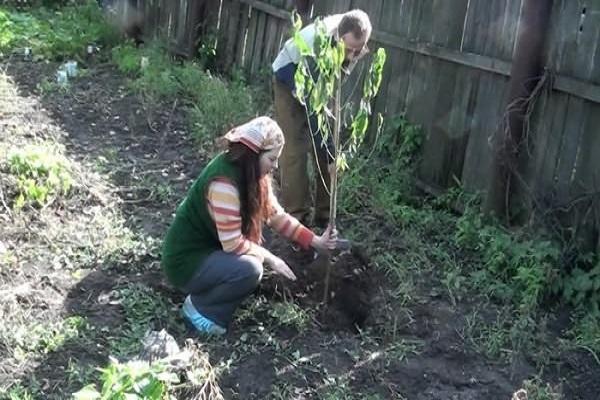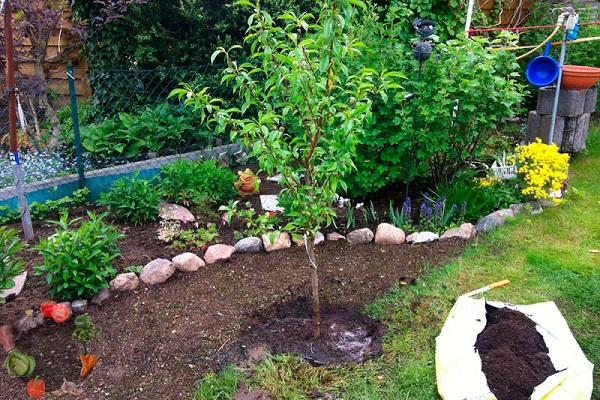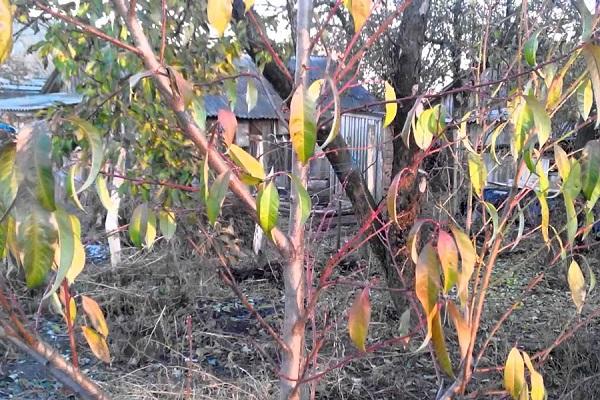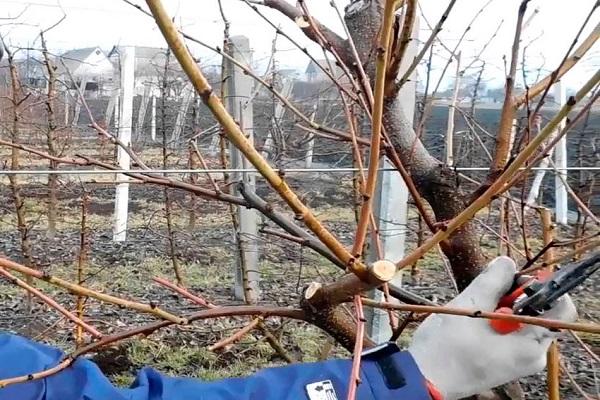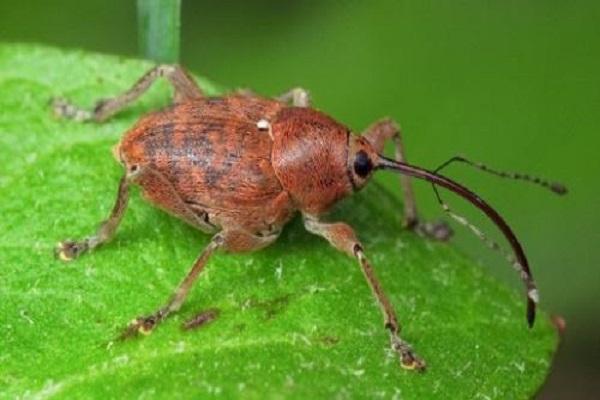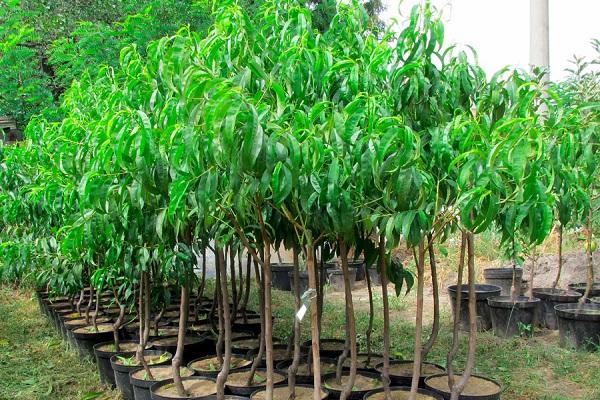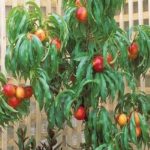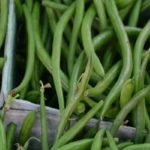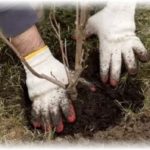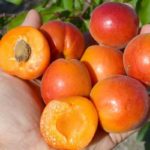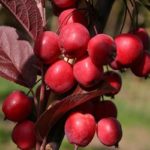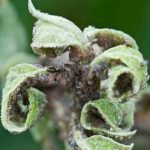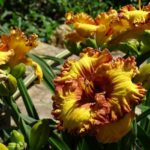The southern fruit nectarine is valued for its sweet taste, ease of care and ability to be stored for a long time. When wondering how to properly grow nectarines, you should understand all the nuances in order to get fruits with high taste.
- General description and characteristics
- Plant varieties
- Early varieties
- Medium varieties
- Late varieties
- Nectarine cultivation
- When to plant
- Selection and preparation of a site
- Preparing planting material
- Landing technology
- Nuances of tree care
- Watering nectarine
- Top dressing
- Treatment
- Wintering
- Trimming
- Formative
- Sanitary
- Diseases and pests of crops
- Nectarine propagation
- Seminal
- Graft
- Features of cultivation in different regions of Russia
General description and characteristics
Nectarines grow on spreading trees 5-7 m high. The trees begin to bloom immediately after the first leaves form. Pink inflorescences form on the branches, which give the plant a decorative appearance. The fruits are formed on one-year-old branches and change color from greenish-yellow to orange. The diameter of the fruit reaches 4-5 cm, subject to proper care and favorable climatic conditions.
Plant varieties
There are several varieties of nectarines, which differ in the period of fruit ripening, yield and other characteristics. According to the timing of fruiting, early, middle and late varieties are distinguished. When choosing a suitable variety for cultivation, it is worth familiarizing yourself with the common types among experienced gardeners.
Early varieties
It is recommended to plant early ripening trees in regions with a short warm period. The following early varieties are popular among gardeners:
- Crimson Gold. Hybrid medium-sized variety with high yield. The fruits are large in size and weigh 120-130 g. The fruit pulp is tender and juicy.
- Big Top. The variety bears large oval-shaped fruits. The fruit has a sweet taste and is easily separated from the stone.
Medium varieties
Many gardeners prefer to grow medium varieties in temperate climates. Common medium nectarine varieties include:
- Wang. The variety is valued for its high yield and easy care. The fruits have delicate yellow flesh with a pronounced aroma.
- Flavor Top. A mid-season variety that bears fruits weighing 150-160 g. The main advantage of the variety is good transportability.
Late varieties
Planting late-ripening varieties is advisable in hot regions. In this category, the following varieties are in demand:
- Stark Red Gold. Trees with one crown bear symmetrical fruits with a round shape and weighing up to 200 g. The pulp is dense, easily separated from the seed. The harvest ripens in mid-August.
- Crimean. On compact plantings, at the end of the summer period, fruits weighing 190 g grow. During the year, 40-50 kg of harvest can be obtained from one tree.
- Columnar. Nectarines of this variety grow on small trees. The fruits are formed densely, which allows for a large harvest.
Nectarine cultivation
Germinating nectarine trees requires taking into account several features. In order for the seedlings to take root well and actively bear fruit, it is necessary to observe the timing of planting in open ground, choose a suitable place for growth, treat the planting material and soil, properly plant and provide care for the nectarine.
When to plant
The favorable planting period depends on the climatic conditions in a particular region. In the southern regions and central zone of the country, it is recommended to plant trees in unprotected soil in early autumn. In areas with a long winter period and in the Urals, it is better to sow seeds in the spring, after the snow has melted and the risk of return frosts has disappeared.
In the Moscow region and surrounding regions, both autumn and spring planting are allowed, since seedlings can germinate under different environmental conditions.
Selection and preparation of a site
Nectarine loves loamy and sandy soil. On heavy clay soil, trees will not take root and will not bear fruit. To plant in a dacha, you need to select an area with deep groundwater, located on the south side of the dacha.The predecessors of nectarine should not be nightshade crops, strawberries and clover, since planting after these plants can lead to the occurrence of verticillium.
During a sunny day, trees should be well lit. High buildings and other plantings that cast shadows should not be located near the plantings. Also, you should not plant nectarines next to peach, as the risk of fungal infections will increase.
Preparing planting material
To plant on a summer cottage, you should purchase annual seedlings of a variety adapted to the climatic conditions of the growing region. It is necessary to carefully inspect the planting material and make sure there are no signs of damage. The roots of young seedlings should not be dry and soft. The inside color of the bark should be greenish, and the absence of sagging at the grafting site is important.
If trees are planted from seed, then before sowing it is necessary to disinfect the seed. To do this, prepare a low-concentrated solution of potassium permanganate, and soak the seeds in it for 15-20 minutes. Then the seed is kept in water for germination and heated for 24 hours.
Landing technology
It is necessary to prepare the planting hole 2-3 weeks before planting. The depth of the hole is determined depending on the height of the seedling. The excavated layer of soil is set aside and mixed with superphosphate and rotted compost. Then half of the resulting earthen mixture is poured in the center of the hole, forming a small hill.
A seedling is placed on a hill in the hole and the roots are carefully straightened, and then the rest of the soil is poured out. The grafting site of the seedling should rise 3-4 cm above the ground level. The soil from the edges of the hole to the center is compacted and watered abundantly.When the water is completely absorbed, the seedling is fixed to a peg and hilling is performed using dry soil.
Nuances of tree care
When growing nectarine in Siberia and other regions, proper care is required. The implementation of agrotechnical practices directly affects the yield of trees and the process of their development.
Watering nectarine
Throughout the growing season, watering nectarines should be regular and plentiful. During the dormant period, it is enough to wet the soil 1-2 times a month. It is also recommended to spray the ground part. In hot weather, it is better to spray the foliage in the early morning or evening, when the temperature drops slightly.
Top dressing
It is recommended to fertilize the soil every 10 days, combining organic fertilizers and mineral nutritional components. A suitable organic fertilizer for nectarine is rotted manure, which is diluted with water in a ratio of 1:10. Complex mineral supplements are purchased in a ready-to-use state. During the dormant period, plantings do not need to be saturated with nutrients.
Treatment
In the middle of the spring period, preventive treatment of trees is carried out. Nectarines are sprayed on the swelling buds with the drug "Karbofos". The following processing is performed at the moment of formation of sheet plates. For secondary spraying, a solution of Bordeaux mixture is used.
Wintering
In the fall, before the onset of severe cold weather, foliage and plant debris are removed from the site. Then the area around the tree trunk is covered with a layer of mulch made from sawdust, peat or straw. Mulching should be done in dry weather to prevent the occurrence of rot.
Young seedlings placed in open ground in the fall need protective shelter during the frost period.To do this, long slats are fixed in the ground next to the plant and a bag is pulled over them. You can also use thick fabric or plastic film as a cover.
Trimming
The formation of plants is carried out to remove excess foliage, which impairs aeration and prevents the passage of sunlight to the fruits, as well as damaged branches that continue to consume nutritional components from the soil.
Formative
Nectarine fruiting occurs on annual growths, so during formative pruning it is necessary to ensure active growth of annual shoots by thinning and shortening the branches. The first formative pruning of trees planted in autumn is required with the onset of spring, at the moment the sap begins to flow.
Sanitary
Autumn and summer pruning of nectarines is carried out for sanitary purposes as necessary. It is recommended to periodically inspect the trees and, if damaged or rotting parts occur or excessive growth of foliage, perform shaping.
Diseases and pests of crops
Improper care or unfavorable growing conditions lead to the development of diseases. Having discovered signs of infection, it is necessary to care for the trees and perform therapeutic treatment. For nectarine, it is recommended to use products based on natural ingredients as an alternative to chemicals.
Among the pests that are especially dangerous for nectarine are codling moths, aphids, scale insects, moths, mites and flower beetle weevils. Large insects can be removed from trees manually. When infested by a large number of parasites, treatment with insecticidal substances is required.
Nectarine propagation
You can increase the number of trees on a site by propagation. Nectarines are planted with seeds or budding is carried out, which consists of cuttings from a cultivated variety.
Seminal
To propagate by seed, it is necessary to leave seeds from the largest and healthiest fruits. The seeds are disinfected and soaked for germination, after which they are transferred to open ground or seedlings are pre-formed at home.
Graft
Nectarine cuttings are grafted onto rootstocks through budding. Cuttings are harvested early in the morning, when the shoots are saturated with a large amount of moisture. The length of the cuttings must be at least 30 cm. The lower cut of the cutting is immersed in water and the lateral growths are removed. On a tree trunk, previously cleaned of dirt and dust, a cut is made in the bark, under which the trimmings are subsequently grafted. The grafting site is wrapped with plastic film for fixation.
Features of cultivation in different regions of Russia
When planning to plant nectarines, it is important to take into account the type of soil, weather and climatic conditions and other factors in the growing region. Depending on the environmental conditions, the timing of planting, the need for protective treatments and the use of shelter change. It will also be useful to learn about the experience of other gardeners in growing fruit crops, which will help you avoid common mistakes and get a good harvest.

